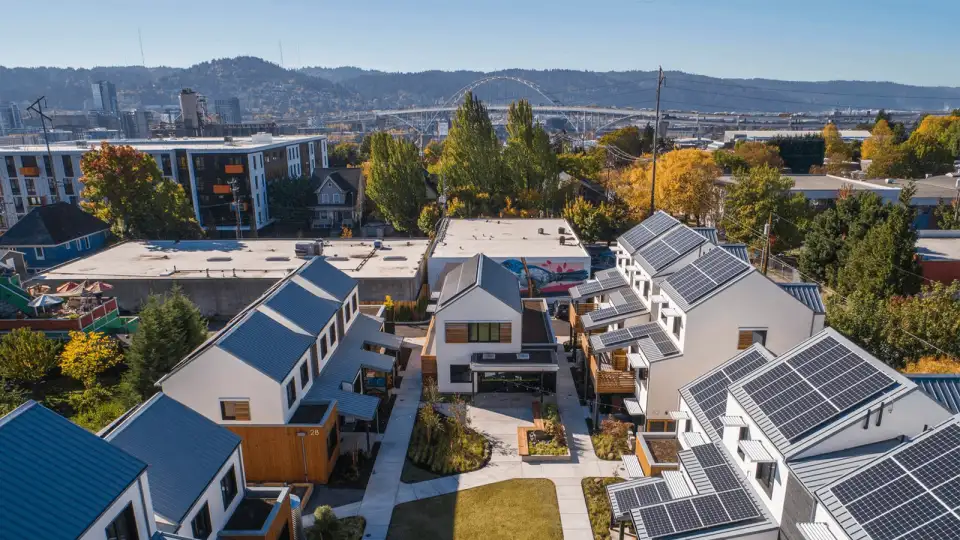
In late June, unbearably hot weather descended on British Columbia, Oregon, and Washington. As many people quickly realized, there were few places to go to escape the heat, because most buildings were not designed to withstand these unprecedented temperatures. And, air conditioning, which had been completely unnecessary in the Pacific Northwest until recently, is in short supply. With mild summers and reliably cool evening and early morning temperatures, many residents circumvented the additional cost of active cooling by relying on night flushing and shading on the occasional hot day.
The three-day heatwave caused by climate change broke decades-old records. Portland, Oregon, saw temperatures of unmatched highs for three consecutive days peaking at 116 ºF. My own living room in Seattle, Washington, reached 107 ºF by the third day, and my walls were hot to the touch. While intolerable for most people living in the Pacific Northwest, the elderly, the unhoused, and low-income people were particularly affected and accounted for the majority of the 194 reported deaths in Oregon and Washington.
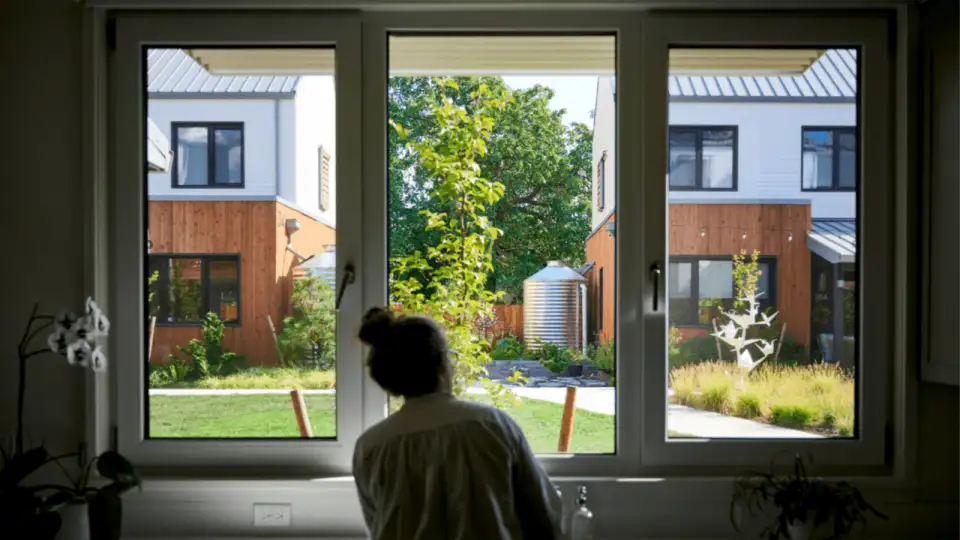
Not all of the Portland area experienced the exact same high temperatures. Vivek Shandas, a professor of urban studies at Portland State University and director of Sustaining Urban Places Research, recorded 25 ºF differences across the city. Shandas told Oregon Public Broadcasting that he recorded surface temperatures of up to 180 ºF and air temperatures of 124 ºF in Portland’s industrial Southeast area. Shandas reported that these temperatures were drastically—and unsurprisingly—higher than those he recorded in the more affluent areas, which tend to have more tree and plant coverage.
Still, tree coverage can only do so much during record-breaking heatwaves. Fortunately, high-performance and Passive House buildings can and did provide safe havens for some Portland residents. The Oaks—12 Passive House townhomes designed and built by Green Hammer in the Rose Villa Senior Living Community—performed significantly better than non-Passive House buildings on the 22-acre affordable living campus, according to Alex Boetzel, director of operations and sustainability for Green Hammer.
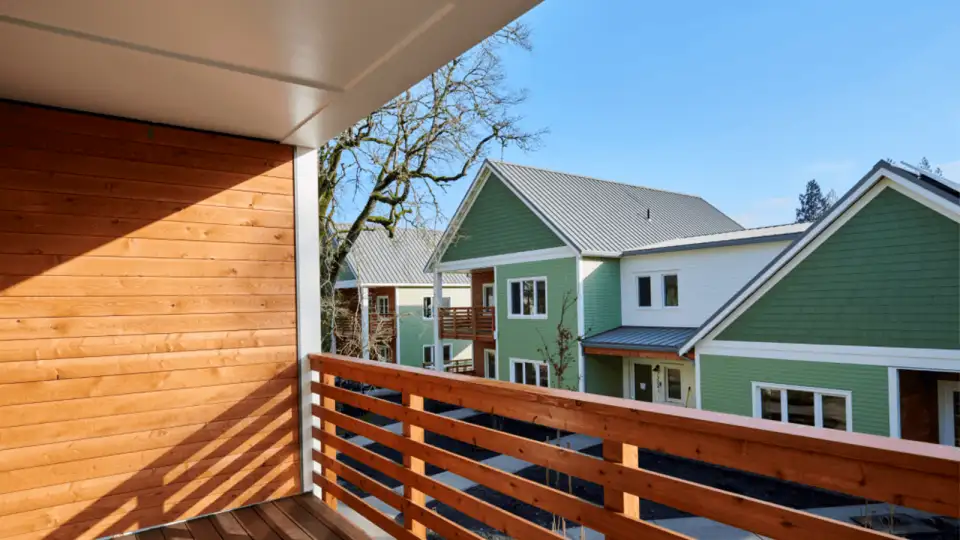
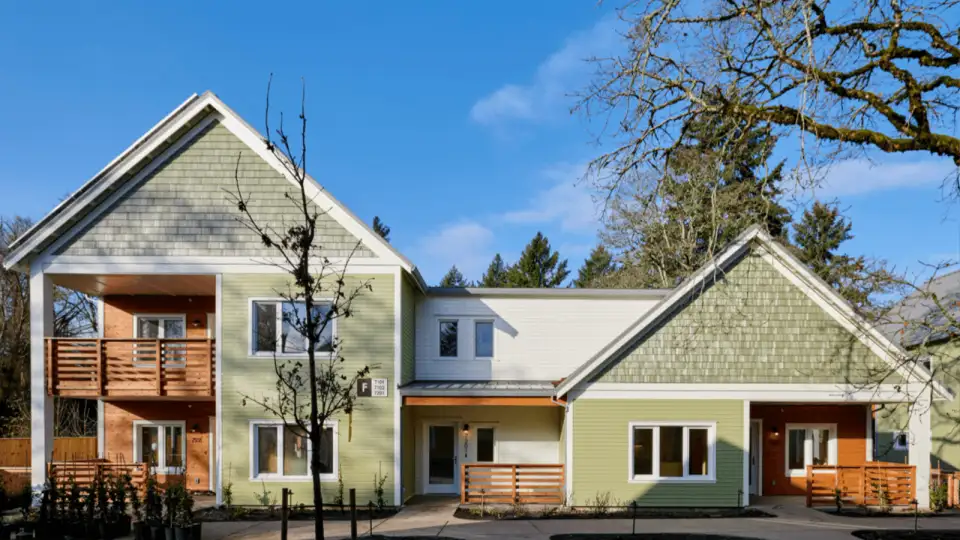
The Oaks, which maintained indoor temperatures below 80 ºF throughout the heatwave, were the only buildings on the Rose Villa campus that did not require supplemental cooling, says Boetzel, though some of the equipment used in the buildings was pushed to its limits. The ductless heat pump equipment satisfying the typically low cooling loads was only rated to 115°F. As a result, the capacity of the equipment was significantly reduced during these high temperatures. Rose Villa is now working with Green Hammer on a climate resiliency plan to upgrade facilitates on the campus to better handle future extreme weather conditions.
One high-level takeaway from the heatwave is that user experience can play a major role in keeping buildings cool, according to Boetzel. Tillamook Row is a high-performance multifamily rowhouse complex in north Portland that was developed by Green Hammer. These buildings surfed through the heatwave reasonably well, with temperatures reaching the upper mid-70s by the third day. Boetzel credits this to the residents’ understanding of their homes and equipment, adding that many residents precooled their homes and took advantage of Portland’s cooler evening and early morning temperatures.
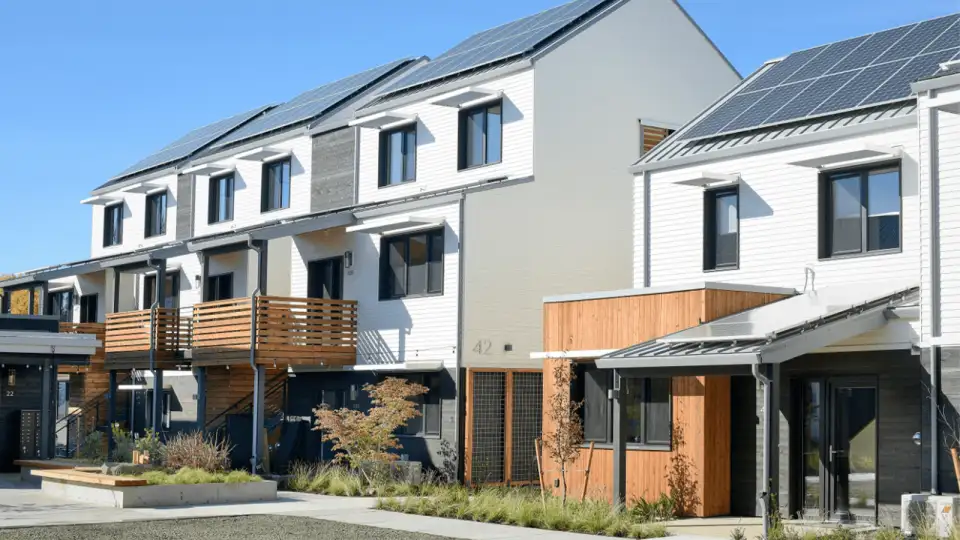
On the other side of the city, Tad Everhart’s EnerPHit residence in southeast Portland became uncomfortable by the third day of the heatwave with temperatures of 78-80 ºF indoors (which was still 34-36 ºF cooler than outside highs). This is typical of Everhart’s previous experience with strings of hot days in the Portland area. He notes when nighttime low temperatures exceed 68 ºF, significantly cooling their house off at night is almost impossible. The lowest outdoor evening temperature at their home during the heatwave was 70 ºF. During the three-day heatwave, the temperatures in their home rose between 4-8 ºF during the daytime hours.
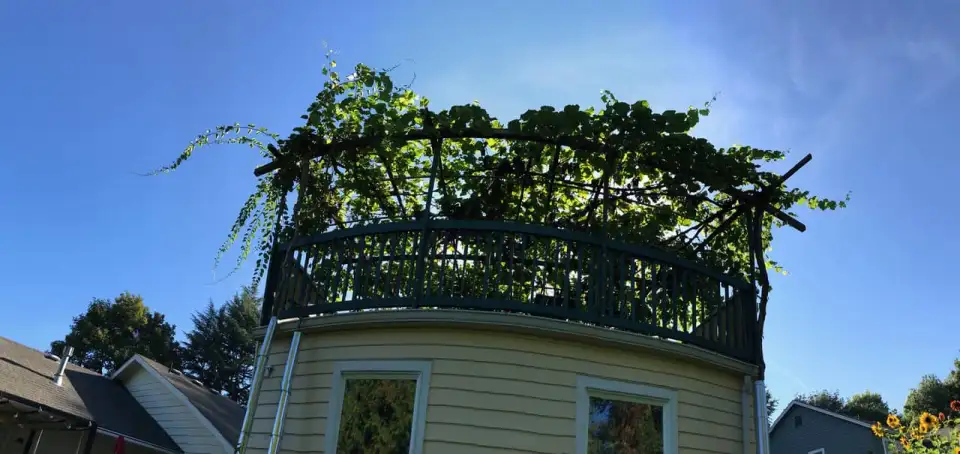
The Everharts' home stayed comfortable without air conditioning during most of the heatwave. For a few hours, it was uncomfortable but bearable. Without air conditioning and with their Sanden water heater tank’s great heat capacity, they were able to turn off all their appliances except their refrigerator for all six of the regional peak load hours. “Our Passive House allowed us to help a lot of other people keep cool via the grid. ” Everhart said in an email. “That helps our regional grid provide electricity to others who need it and avoid brownouts.”
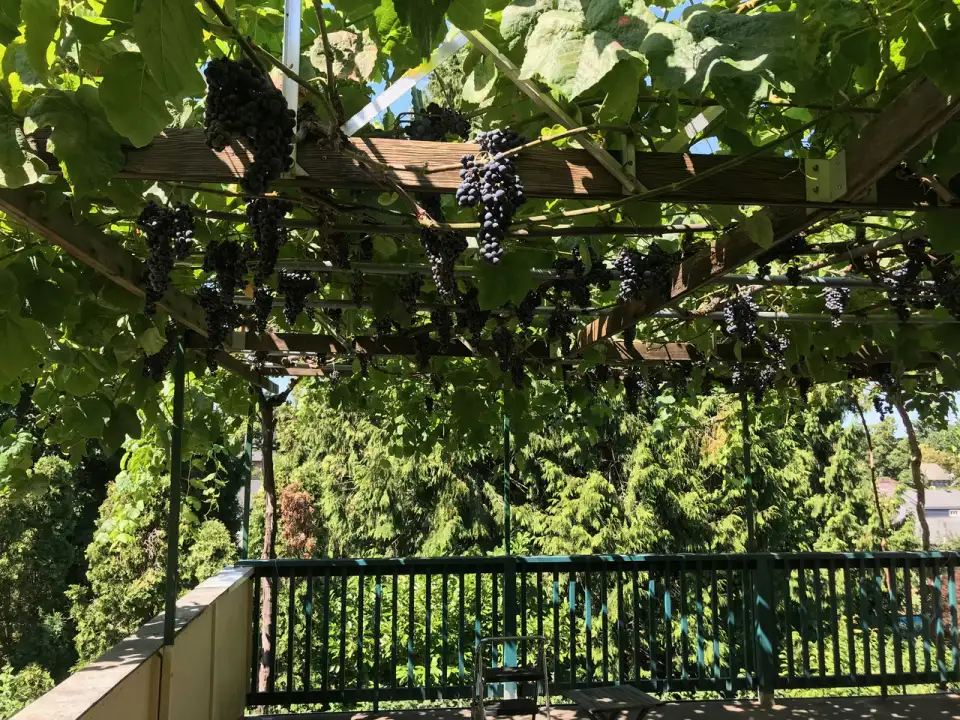
The efficiency of his EnerPHit home enabled Everhart to lessen the load on the electrical grid—a critical community asset during extreme weather events. While Portland did not see mass blackouts, other areas were not so fortunate during extreme weather events this past year. The freeze in Texas in February 2021 forced occupants of poorly designed homes to ramp up their use of their mostly electrically powered heating systems—until they couldn’t. Grid overload caused mass blackouts, bursting pipes and creating other disasters for Texans with conventionally built homes.
Climate change presents a challenge even for high-performance buildings going forward. Human-caused climate change is accelerating the rate of change exponentially and in once unthinkable ways. Fifteen years ago, cooling strategies for the Pacific Northwest were a low priority. Boetzel relates today’s cooling challenge to the experience of rethinking fresh air supply amid historic wildfires last year. “We were all talking about how fresh air is the best thing you can do—as in ‘let’s bring in as much fresh air as we can’—but all of a sudden we had the wildfire smoke. There are scenarios where we have to adjust our thinking. Everyone was scrambling to try to understand filtration and how to approach indoor air quality when the outside air is not better than indoor air, which was our assumption,” Boetzel says.
Passive survivability is becoming an increasingly important design criterion as the frequency of extreme weather events increases. The Oaks and Tillamook Row offered more relief to their occupants than most other buildings in the Pacific Northwest provided, even though these buildings were not designed to withstand temperatures upwards of 100 ºF — partly because Passive House modeling programs rely on historic data. To minimize the risk of overheating generally, PHI recommends thoroughly addressing the basic design influences on summer comfort, including shading and night ventilation, and then stress-testing a building’s design using the summer temperature tool in the PHPP. This tool, which has been a supplemental download, is now integrated into the latest version of the PHPP so that designers can immediately get feedback on summer comfort risks while fleshing out their models.